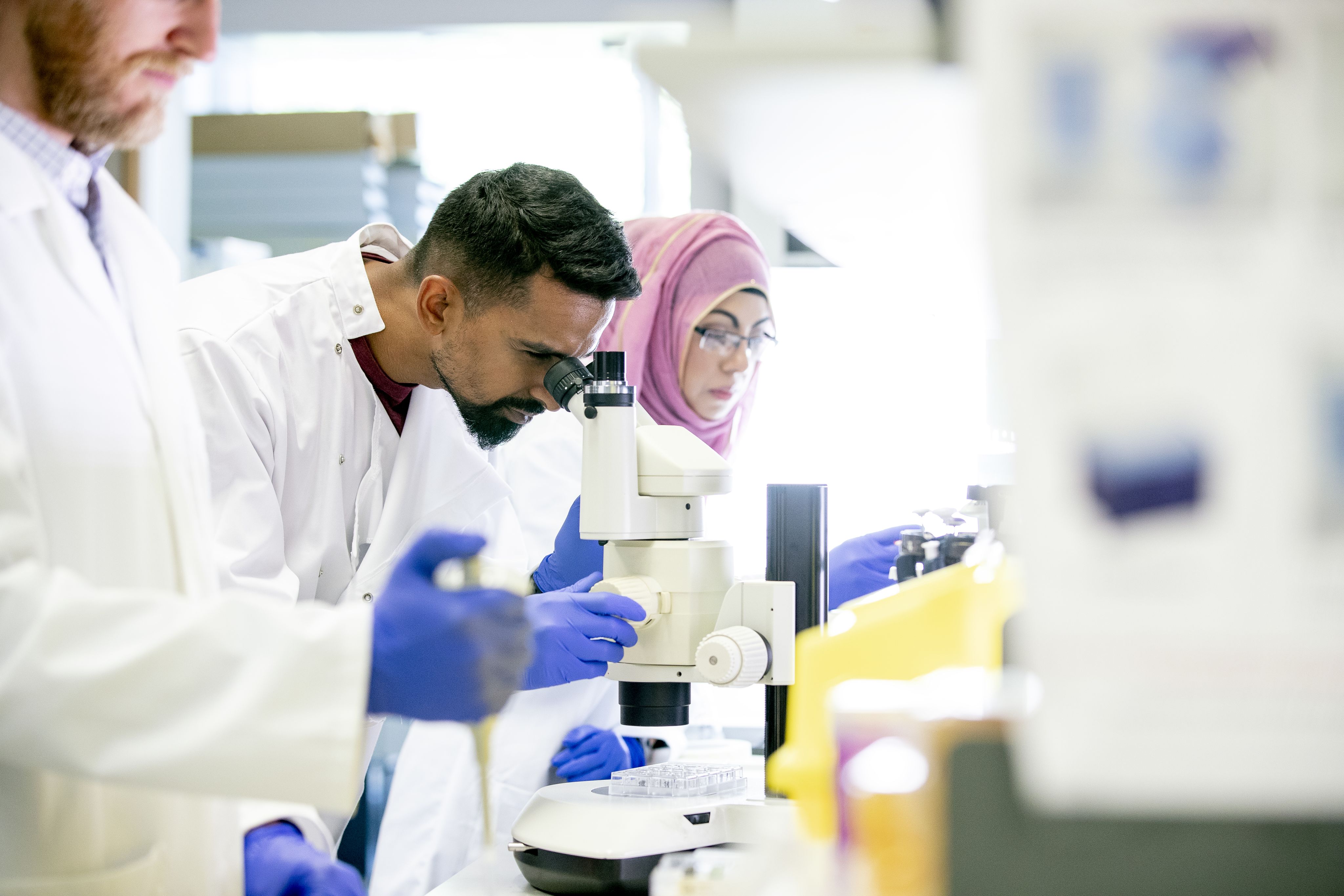Reflecting on our highlights in 2023
An end of year summary by NICE's chief executive Dr Sam Roberts

2023: a year of transformation for NICE

As I pause to reflect on the past 12 months, I’m struck by how much we’ve achieved.
It’s been a period of profound change for NICE. One in which we’ve built on our core principles of independence, transparency and rigour, to achieve great things.
A key driver behind this activity is our ambitious new transformation plan.
Launched in July, the plan sets out how we will evolve by focusing on the relevance, timeliness, usability and impact of our guidance.
And it shows how – amidst an evolving health and care system – we’ll be able to maintain our role in helping you deliver the most effective and affordable care to people fast, while ensuring value for the taxpayer.

More relevant, timely guidance
In 2022-23 I’m pleased that we:
- Published guidance on a medicine at the same time as it received its licence, for the first time ever, with technology appraisals on average 17% quicker to reach a recommendation than last year.
- Appraised 70% more medicines than we did in 2019-20.
And in a series of guidance firsts, we recommended:
- Two new personalised immunotherapy treatments for aggressive forms of blood cancer, and the first immunotherapy drug for an advanced form of cervical cancer.
- We recommended one of a new class of oral treatments to prevent migraine, available to 145,000 people.
- The first treatment for obstructive hypertrophic cardiomyopathy, providing access for around 7,000 people.
Further highlights include game-changing guidance on continuous glucose monitoring, for 150,000 people with type 1 diabetes.

Focusing on what matters most
As part of our transformation plan, throughout the year we’ve been focusing on what matters most.
Given the exceptional pressures the system is under, recovering core services and improving productivity is a key priority.
So, in March, we launched a new resource that pulls together all our recommendations that support productivity in one place.
The resource matches relevant NICE guidance to NHS priorities and planning guidance, and priority areas of the NHS Long Term Plan.
In June, we launched the first major update to our health inequalities web resource. The new update maps our guidance to the NHS’ 5 areas of clinical focus, where care can be improved for children and young people. Since its launch, the resource has been viewed nearly 45,000 times.
In the autumn, we published our first resources to help clinicians implement virtual wards. Virtual wards (also known as hospital at home) provide hospital level care and monitoring outside of a hospital setting.
Our virtual wards webpage includes testimony from practitioners on their experience of using virtual wards, maps our guidance to existing frameworks, and helps clinicians manage patients with acute respiratory infections at home and increase capacity in hospitals.


Providing useful and useable advice
We’ve been making sure our guidance is up-to-date, easy to find and easy to use.
For example, we’re fast-tracking patient access to promising technologies through our early value assessment programme (EVA). The programme provides conditional recommendations on promising health technologies with the potential to address unmet need.
This year, EVA:
- Recommended 4 digital technologies for children and young people with mild to moderate symptoms of anxiety or low mood.
- Recommended a genetic test to prevent newborn babies going deaf.
- Identified 4 innovative tests that can help people with urinary tract infections receive the correct course of antibiotics more quickly.
In October, we launched the first modular update to our methods and processes. The update includes updated recommendations on COVID-19 treatments, and incorporates our proportionate approach to technology appraisals.
Through a proportionate approach we’re applying light-touch, faster evaluations to simpler, low-risk treatments. We’ve piloted eight new treatments through this streamlined approach so far, which is up to 45% faster than our standard process, benefitting around 350,000 people.
And we’re providing more clear advice to help patients decide between healthcare options. In June, we published a decision aid to help discussions between clinicians and patients on sleeping pill prescriptions.


Learning from data and implementation
We’re collecting and using real world data to actively shape and improve the health and care system.
Our first real-world evidence framework illustrates how real-world data fills gaps in our knowledge and drives access to innovations for patients. It’s now been viewed more than 40,000 times.
We’ve strengthened our international health technology assessment collaboration. More than 134 million people could now benefit from our work with 6 other health technology assessment bodies from across the UK, Australia and Canada.
And in November, we published a report on new treatments for Alzheimer’s disease.
Recent estimates indicate there are over 850,000 people with dementia in the UK. The most common type of dementia is Alzheimer’s disease. Disease-modifying dementia treatments are currently being developed with the aim to alter the course of disease progression and reduce its substantial impact.
Our report concludes that NICE’s methods and processes for evaluating the new class of Alzheimer’s drugs in the NHS are appropriate, while acknowledging that key issues need to be considered.
The report was produced by our Health Technology Assessment Innovation Laboratory (HTA Lab). The lab offers a ‘safe space’ for creating solutions in collaboration with system partners and stakeholders. It is currently developing proposals for the evaluation of AI and genomics-based technologies that can be used in multiple disease areas.


A revamped service for pharma and health tech
As part of our transformation, this year we introduced a newly refreshed engagement service for pharmaceutical and health tech developers, NICE Advice.
The service provides support for pharmaceutical and healthtech companies seeking to enter the market, by providing accurate, reliable scientific and strategic advice, education, and NHS insights.
It is based on what our life sciences customers told us they want and need from NICE. I’m confident that it will help companies succeed in preparing for a NICE evaluation or engaging directly with payers or commissioners.

Meeting for the first time since the pandemic
A personal highlight was the opportunity to attend NICE’s annual conference - the first since 2019, and the first I’ve attended as chief executive of NICE.
Over 500 people registered to hear 50 speakers from NICE and sectors such as academia, primary and secondary care, life sciences and industry.
It was a pleasure to tell you about our transformation story, and to hear the remarkable stories of innovation, productivity and best practice that are having an impact on health and care.

As we move into 2024, we’ll continue working with our partners to ensure we’re tackling what matters most.
We’ll focus on ensuring our guidance is as timely and easy to use as possible.
And we’ll contribute to laying the foundations for a health and care system of the future. One that supports self-care through digital products and care that’s closer to home.

Thank you
I’d like to finish by thanking all of our staff, our chairman and our board. Without their dedication and resilience, none of this could have been achieved. I would also like to thank our system partners, our independent committees - and all the people with lived experience who sit on them - for their vital support in helping us deliver our guidance.
Wishing you a joyful, healthy festive season and a very happy 2024.
Dr Sam Roberts, chief executive of NICE.
